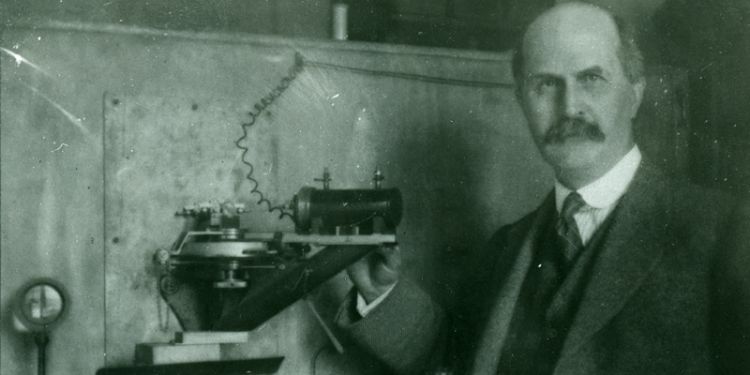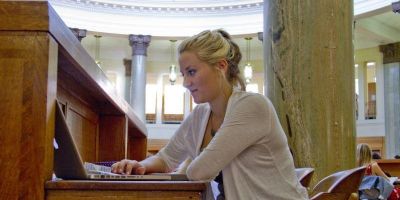Something to Bragg about

New exhibition explores the legacy of Sir William Henry Bragg at the University of Leeds.
Sir William Henry Bragg, and his son Lawrence, changed the way we understand the world around us, all from a laboratory at the University of Leeds. A new exhibition at The Stanley & Audrey Burton Gallery explores the impact of Bragg’s work.
The exhibition, Shaping the course of modern science: William Henry Bragg and his legacy at the University of Leeds, will use outstanding material from the University's Special Collections to reveal the story of Bragg’s Nobel Prize winning work, and his continued legacy. The exhibition opens on 26 October 2021, coinciding with the opening of the new Sir William Henry Bragg building, and as part of the Bragg Cultural Programme.
Sir W.H. Bragg joined the University of Leeds in 1909 as the Cavendish Professor of Physics. It was here in Leeds where he undertook his pioneering research on X-rays and crystals, with his son Lawrence. They became the first, and so far only, father and son duo to be awarded the joint Nobel Prize for Physics in 1915.
‘William Henry Bragg and his son Lawrence formed a fantastic scientific partnership. The father brought amazing experimental skill, the son theoretical genius. Together they provided the springboard for scientific discoveries that would eventually reveal the secrets of nature.’
The prize was awarded for their work at Leeds, which included the proposal of an equation which allowed the position of atoms within crystals to be determined from X-ray photographs. The equation is also known as Bragg’s law. The guest curator, Dr Stella Butler, comments that “William Henry Bragg and his son Lawrence formed a fantastic scientific partnership. The father brought amazing experimental skill, the son theoretical genius. Together they provided the springboard for scientific discoveries that would eventually reveal the secrets of nature.”
Inspired by Bragg
Alongside highlighting Bragg’s work at Leeds, the exhibition will also delve into his legacy that still lives on today. William Astbury, Bragg’s student and protégé, joined the University of Leeds in 1929, pioneering the investigation of large biological molecules. His laboratory became one of the UK’s most important centres for crystallography. It was at this centre in Leeds where Astbury’s research student Florence Bell wrote the thesis which contained one of the first discoveries of the structure of DNA, the carrier of genetic information.
Thanks to Bragg
Bragg’s legacy continued with the introduction of new computational methods in the 1950s by Ernest Gordon Cox and Durward Cruickshank, prompting the purchase of Leeds’ first computer, a Ferranti Pegasus. The 1980s saw further development with the production of the first computer generated 3D images of an antigen-antibody complex.
Bragg’s equation has been in continual use since it was first published and has helped leading scientists over the last ten decades to uncover the secrets of life. Bragg's work in understanding the make-up of crystals has led to the exploration of the foundations of human biology, which has informed life-changing developments of new treatments and vaccines, such as the COVID-19 vaccine, impacting the lives of everyone across the world.
Highlights on display
Some of the items displayed as part of the exhibition include:
The original notebooks used by William Henry and Lawrence Bragg to record the results of their 1913 experiments will be on display. These unique books from the University's Special Collections contain the handwritten discoveries which led to the Bragg equation.
Bragg’s original spectrometer, on loan from the Royal Institution, will also be on display. This special piece of equipment was built in a University of Leeds workshop and helped the father and son team to work out the structure of many crystals including rock salt, sodium chloride, and diamond.
Florence Bell’s original thesis will be exhibited. Under the tutelage of William Astbury, and using x-ray crystallography which had been developed by Bragg, Bell took some of the earliest photographs of the helical structure of the genetic material, DNA.
The first computer generated 3D images of an antigen-antibody complex. The computers used to generate these will have been programmed with the Bragg equation. Images have been provided by Professor Simon Phillips who was the first Director of the Leeds based Astbury Centre for Structural Molecular Biology, established in 1999, and was part of the team who produced these images.




